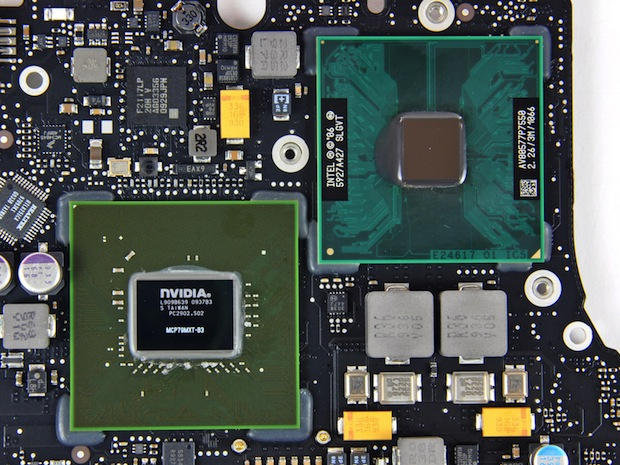Apple's own ARM chips in Apple Laptops? Not so fast.
 Since Apple introduced its own A4 chip in 2010, rumors have been stirring among technology pundits and chipmakers, on whether Apple might just do away with Intel chips altogether, and extend its own blend of ARM chips to the entire array of its products, including Macs.
Since Apple introduced its own A4 chip in 2010, rumors have been stirring among technology pundits and chipmakers, on whether Apple might just do away with Intel chips altogether, and extend its own blend of ARM chips to the entire array of its products, including Macs.
Fast-forward five years, Apple and Intel are still very much in business with each other, yet some are still wondering, for how long?
Intel vs. ARM:
Fact: Intel chips might be more expensive, but they can’t be competed against or replicated. ARM chips need to be far more powerful than they are today, to replace Intel chips, especially after witnessing how ARM chips fared in Windows RT Surface tablets.
Fact: Apple has the potential to make ARM chips powerful enough for Macs, but will it? Apple has made incredible strides in securing ownership of much of its hardware technology. Replacing Intel chips with Apple’s own design of ARM, would not only lower the cost of production, making future devices either more affordable, or more feature-packed, so what’s the hold-up?
Follow the money:
It’s not that Apple can’t make its own chips, it just not happening right now, as it’s not realistic from an engineering point of view, and it’s not going to be for a while. Besides, moving away from Intel would be a tremendous mistake at this stage of the game.
Apple is in a unique position to be able to afford the premium price of Intel chips, because it allows the unique benefit of inheriting the advanced engineering that comes from Intel, at a competitive price. It also goes without saying that it’s not all about Intel.
Let’s not forget that Apple has also been purchasing AMD chips for its GPUs based on x86 architecture. Apple likes the ability to switch between AMD and nVidia for its graphic requirements, as it allows to pick the best price for the best technology, and passing the savings onto the consumer. Very few companies in the world can afford this privilege, and by doing away with Intel and the x86 architecture altogether, Apple would have tough choices to make GPU-wise.
As far as we know today, it’s going to be a while before Macs can run on ARM chips, powerful enough, to take on even the lowest-end Intel chips, but when it happens, it won’t be pretty, as
the economical implications on chip manufacturers will have a widespread effect on any device based on x86 technology.
Oh, there’s just one more thing:
Apple switched to Intel in the first place, back in 2005, as Mac sales 10 years ago barely reached 4 million units per year, when the Mac still ran on PowerPC, Motorola chips that were incompatible with operating systems other than Apple Mac OS.
Shortly after Apple made the switch, production jumped to the nearly 20 million Mac units per year Apple makes today.
By enabling users to emulate and run software from other platforms, Apple encouraged consumers to buy Macs, which is precisely why moving away from x86 technology right now would be definitely ill-advised.
What would it really take for Apple to build an all-Apple Mac, inside and out, then? If we were to use our imagination, While ARM chip technology is not yet able to support native applications from mainstream operating systems, given a software landscape in continuous evolution, there could be a chance for two scenarios: one in which future operating systems, including OS X and Microsoft Windows, evolve and develop native support of ARM chips; and an alternative scenario, in which ARM chips evolve to support native, non-emulated x86 code.